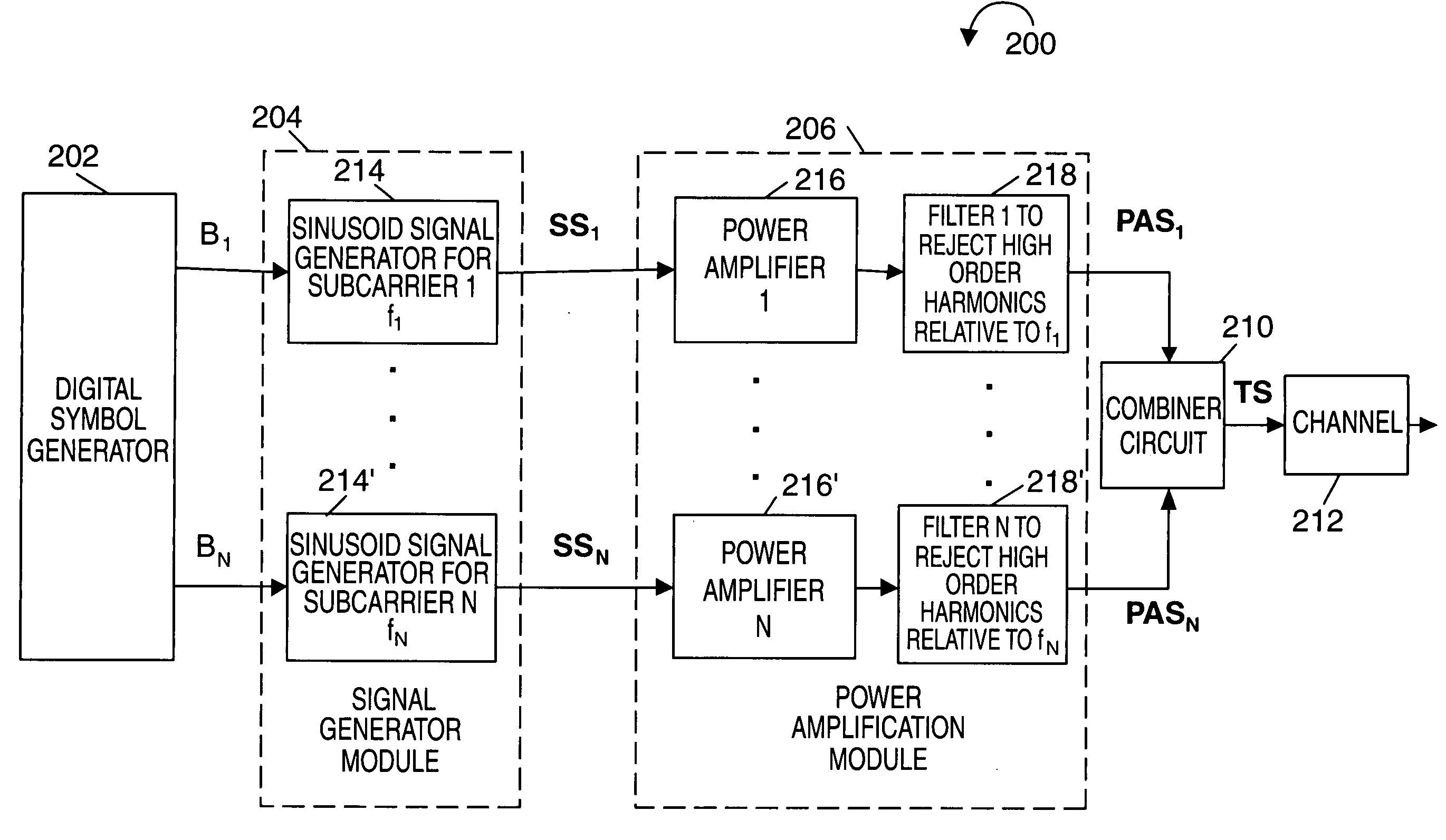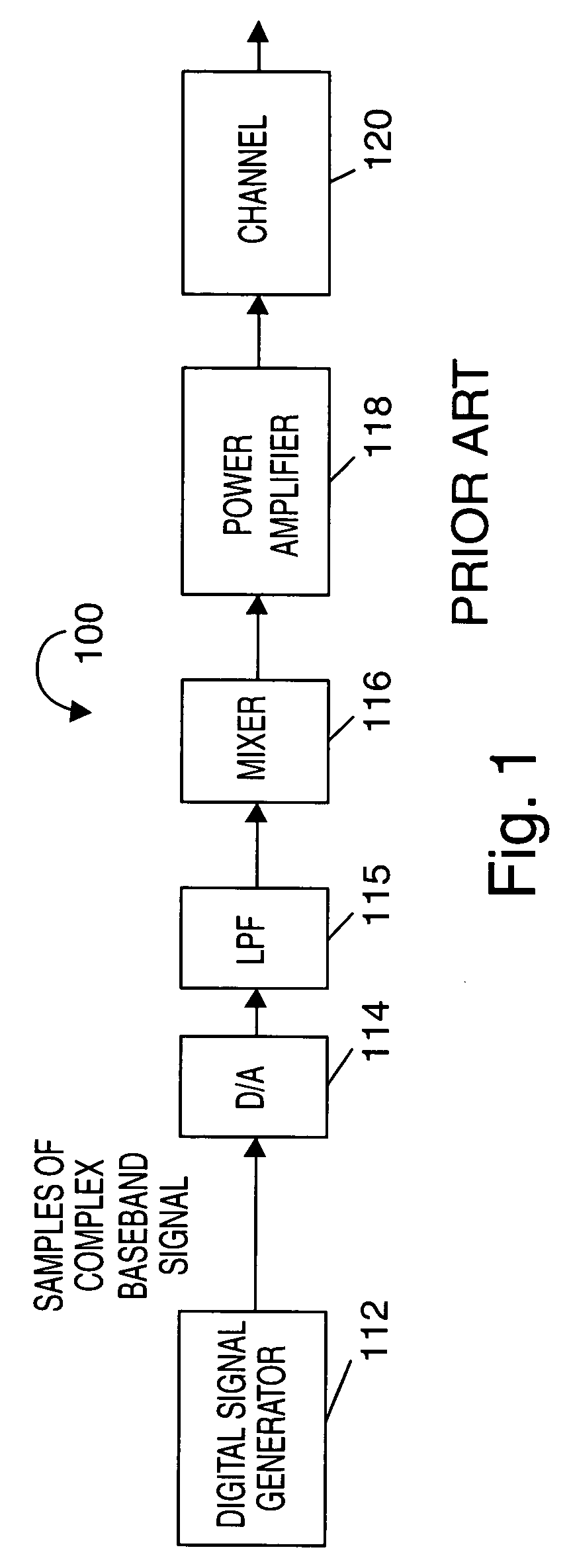Methods for generating and transmitting frequency hopped signals
a frequency hopping and signal technology, applied in multiplex communication, multi-frequency code systems, polarisation/directional diversity, etc., can solve the problems of high peak-to-average ratio of transmitted signals to be amplified, frequency on which a particular device may want to transmit information can change with time, and transmission of ofdm signals generally consumes a significant amount of power. , to achieve the effect of cost and hardware efficiency, simple design and simple manufacturing
- Summary
- Abstract
- Description
- Claims
- Application Information
AI Technical Summary
Benefits of technology
Problems solved by technology
Method used
Image
Examples
Embodiment Construction
As discussed above, the present invention is directed to frequency hopping transmission systems where signals are transmitted using a plurality of subcarrier signals, each subcarrier corresponding to a different frequency. The methods and apparatus of the present invention are particularly well suited for use in mobile devices where, at any given time, the mobile device will normally use a subset, e.g., a small number, of the total number of subcarrier frequencies, e.g., tones, available for use in a cell by mobile devices. The tones may be used for transmitting signals, e.g., data and / or control information, to a base station. Various embodiments are directed to frequency hopping implementations and, in some implementations, frequency hopping OFDM systems which can take advantage of various fixed frequency filter features of some embodiments.
FIG. 3 illustrates an exemplary frequency hopping frequency division multiplexer signal generation and transmission system 300 capable of ge...
PUM
 Login to View More
Login to View More Abstract
Description
Claims
Application Information
 Login to View More
Login to View More - R&D
- Intellectual Property
- Life Sciences
- Materials
- Tech Scout
- Unparalleled Data Quality
- Higher Quality Content
- 60% Fewer Hallucinations
Browse by: Latest US Patents, China's latest patents, Technical Efficacy Thesaurus, Application Domain, Technology Topic, Popular Technical Reports.
© 2025 PatSnap. All rights reserved.Legal|Privacy policy|Modern Slavery Act Transparency Statement|Sitemap|About US| Contact US: help@patsnap.com



